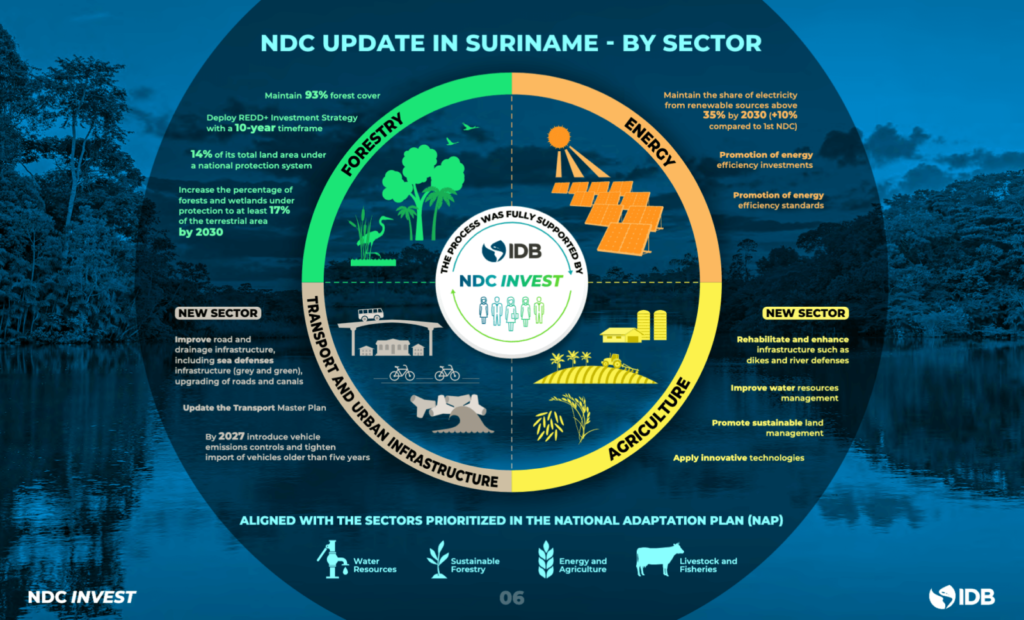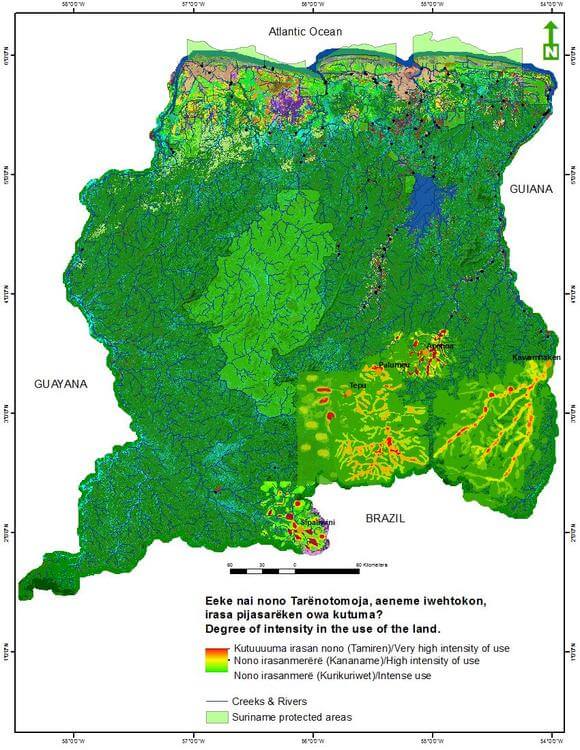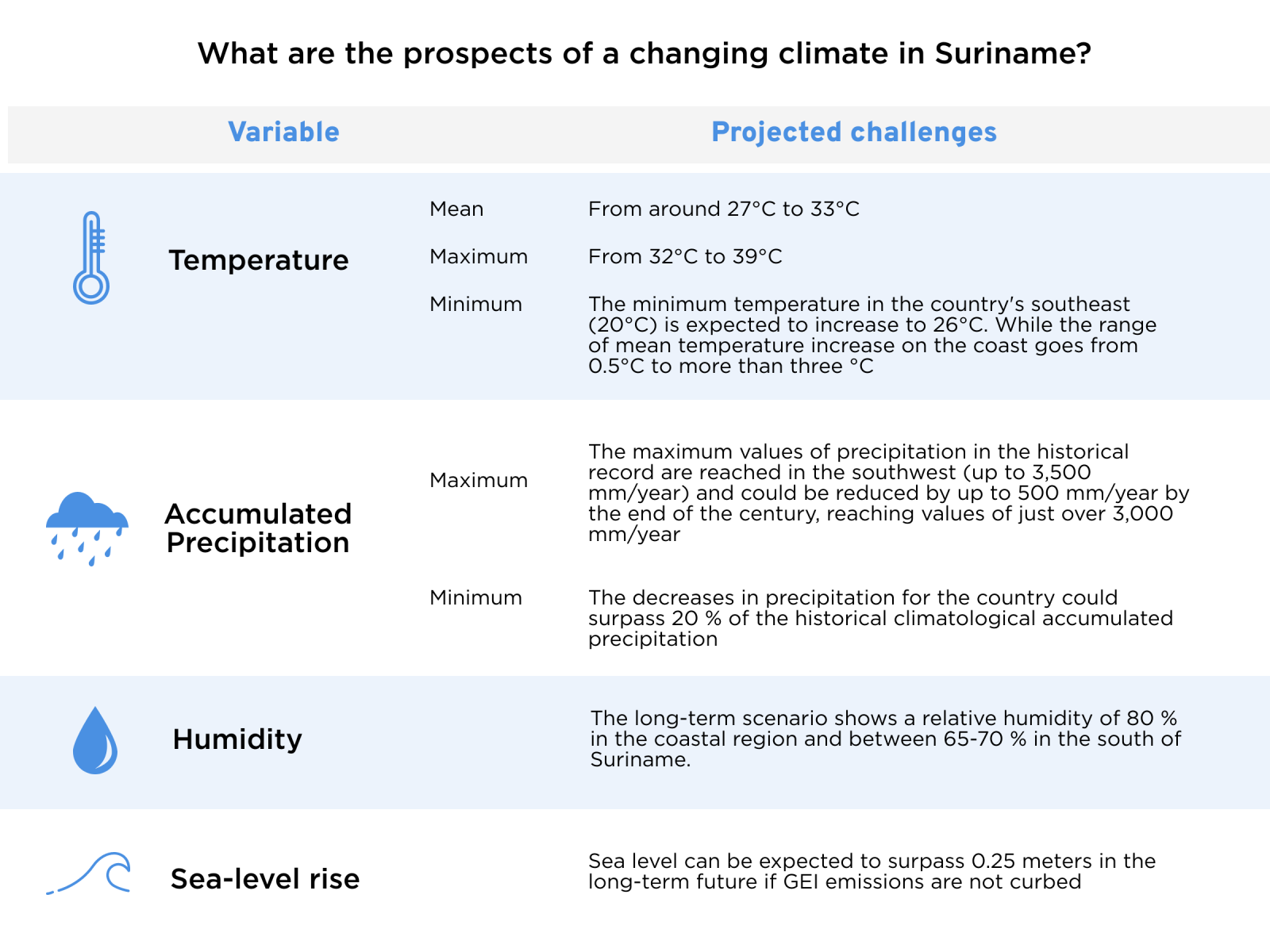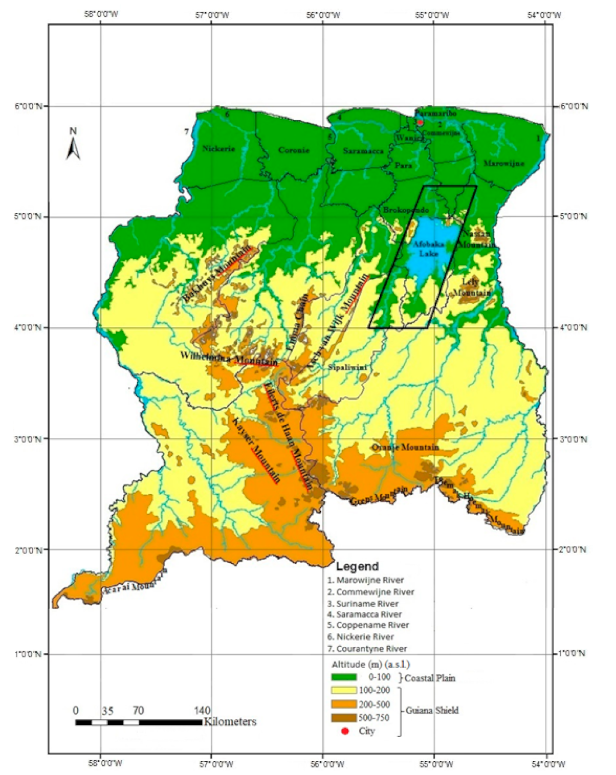Have you ever stopped to think about how the climate in Suriname affects the incredible biodiversity found in this South American country? It’s a fascinating topic that deserves some exploration. In this article, we’re going to dive deeper into the impact that Suriname’s climate has on its rich and diverse array of plant and animal life.
Suriname is blessed with a tropical rainforest climate that is characterized by high temperatures and heavy rainfall throughout the year. This climate creates the perfect conditions for a wide variety of plant species to thrive, from towering trees to tiny ferns and colorful orchids. These plants provide a vast array of habitats for animals, from the tiniest insects to the largest mammals. Suriname’s climate also plays a significant role in the unique adaptations of its wildlife, such as the vibrant colors of birds or the ability of certain animals to survive in waterlogged environments. In the following sections, we’ll delve into specific examples of how Suriname’s climate impacts its biodiversity, from the stunning array of bird species to the fascinating world of aquatic life. So, stay tuned as we uncover the secrets behind this natural wonderland!
Climate in Suriname
Suriname, located on the northeast coast of South America, experiences a tropical rainforest climate. This climate is characterized by high levels of rainfall and consistent high temperatures throughout the year. The unique tropical rainforest climate of Suriname has a significant impact on its biodiversity.

Tropical rainforest climate
Suriname’s tropical rainforest climate is primarily influenced by its location near the equator. The country experiences little variation in temperature throughout the year, with average temperatures ranging from 24°C (75°F) to 30°C (86°F). These warm temperatures provide an ideal environment for the growth and development of diverse flora and fauna.
Temperature and precipitation patterns
In Suriname, rainfall is abundant throughout the year, with an average annual precipitation of around 2,200 millimeters (87 inches). The country experiences two distinct rainy seasons – from December to February and from April to August. These seasons coincide with the northeast trade winds, which bring moisture-rich air from the Atlantic Ocean. The rainy seasons contribute to the overall humidity and lush vegetation found in Suriname’s rainforests.
Seasonality in Suriname
Unlike many other regions, Suriname does not experience distinct seasons such as spring, summer, autumn, and winter. Instead, the country’s climate is characterized by wet and dry seasons. The wet seasons, also known as the rainy seasons, are associated with increased rainfall and higher humidity levels. Conversely, the dry seasons are characterized by reduced rainfall and lower humidity.
Biodiversity in Suriname
Suriname is renowned for its rich and diverse ecosystems. The country’s extensive rainforests, wetlands, rivers, and mountains support a vast array of flora and fauna, making it a biodiversity hotspot.
Rich and diverse ecosystems
Suriname’s diverse ecosystems include lowland rainforests, mangroves, savannas, and montane forests. Each of these ecosystems provides a unique habitat for a variety of plant and animal species. The combination of various ecosystems creates a mosaic of habitats that support a high level of biodiversity.
Suriname’s unique flora and fauna
Suriname is home to an astonishing array of plant and animal species. Its rainforests alone are estimated to contain over 2,000 species of trees and numerous medicinal plants. The country boasts a diverse range of mammals, including jaguars, giant anteaters, and capybaras. Suriname is also a haven for bird enthusiasts, with over 700 bird species residing within its borders.
Endemic species in Suriname
Suriname is recognized for its high number of endemic species, meaning they are found nowhere else in the world. One such example is the Surinamese toad (Pipa pipa), a unique amphibian that lays its eggs on its back. The toad is specially adapted to Suriname’s rainforest environment and plays a crucial role in maintaining the delicate ecological balance.
Effects of Climate on Biodiversity
Suriname’s climate has both direct and indirect effects on its biodiversity. While the tropical rainforest climate provides suitable conditions for diverse flora and fauna, it also poses challenges and threats to the survival of certain species.

Habitat loss and fragmentation
Climate change, coupled with other factors such as deforestation and urbanization, contributes to the loss and fragmentation of habitats in Suriname. Rising temperatures and extreme weather events can degrade and destroy critical habitats, leading to a decrease in biodiversity. The destruction of habitats also disrupts ecological processes and reduces the availability of resources for various species.
Species adaptation and survival
Suriname’s biodiversity is constantly evolving and adapting to its climate. Many species have developed unique adaptations to thrive in the tropical rainforest environment. For example, some plants have evolved large leaves to capture more sunlight, while certain animal species have developed specialized feeding mechanisms to make the most of available resources. However, rapid changes in climate and environmental conditions can outpace an organism’s ability to adapt, leading to population decline and even extinction.
Changes in species distribution
Climate change can significantly influence the distribution of species in Suriname. As temperatures change and rainfall patterns shift, certain species may be forced to migrate in search of suitable habitats. This movement can disrupt ecological relationships and introduce new species to different areas, potentially leading to competition for resources and the displacement of native species.
Climate Change and Biodiversity Loss
Climate change is a significant driver of biodiversity loss globally, and Suriname is not exempt from its impacts. The warming climate and associated changes in rainfall patterns have far-reaching consequences for the country’s unique ecosystems and species.
The role of climate change
Suriname’s climate is experiencing changes attributed to global climate change. Rising temperatures, increased frequency and intensity of extreme weather events, and altered rainfall patterns are all indicators of a changing climate. These changes directly and indirectly affect the biodiversity found within the country’s ecosystems.
Impacts on species abundance
Climate change can have profound effects on the abundance of certain species in Suriname. Changes in temperature and rainfall patterns can disrupt breeding cycles, alter food availability, and impact reproductive success. As a result, populations of certain species may decline, leading to reduced biodiversity within specific habitats.
Shifts in ecological communities
Climate change can cause shifts in ecological communities in Suriname. As certain species adapt to changing conditions, they may outcompete or displace native species, disrupting the delicate balance of ecosystems. Changes in the composition of ecological communities can have cascading effects on species interactions, nutrient cycling, and overall ecosystem functioning.
Threats to Suriname’s Biodiversity
Suriname’s biodiversity faces numerous threats, many of which are exacerbated by the impacts of climate change. Preserving the country’s unique ecosystems and the species that depend on them is crucial to maintaining its rich biodiversity.

Deforestation and logging
Deforestation for agriculture, logging, and mining poses a significant threat to Suriname’s biodiversity. The clearing of forests destroys habitats and disrupts ecological processes, leading to the loss of plant and animal species. Addressing deforestation and implementing sustainable land-use practices are vital for the conservation of Suriname’s biodiversity.
Illegal wildlife trade
Illegal wildlife trade also contributes to the decline of Suriname’s biodiversity. The trafficking of endangered species and their body parts threatens the survival of many unique and important species. Strengthening law enforcement efforts and raising awareness about the ecological impacts of wildlife trade are essential steps in combating this threat.
Pollution and habitat degradation
Pollution and habitat degradation degrade the quality of ecosystems and threaten the survival of many species. Industries such as mining and agriculture can release harmful pollutants into the environment, affecting water quality and soil fertility. Reducing pollution and implementing sustainable practices are essential for safeguarding Suriname’s biodiversity.
Conservation Efforts in Suriname
Recognizing the importance of preserving its unique biodiversity, Suriname has implemented various conservation initiatives to protect its ecosystems and promote sustainable resource management.
Protected areas and national parks
Suriname has established protected areas and national parks to conserve its diverse ecosystems. The Central Suriname Nature Reserve, covering over 1.6 million hectares (4 million acres), is one of the largest protected areas in the world. These protected areas provide vital habitats for numerous plant and animal species, safeguarding their survival for future generations.
Community-based conservation initiatives
Engaging local communities in conservation efforts is crucial for the long-term success of biodiversity protection in Suriname. Community-based initiatives empower local people to actively participate in conservation activities and promote sustainable practices. These initiatives not only contribute to preserving natural resources but also provide economic opportunities for local communities.
Sustainable resource management
Promoting sustainable resource management practices is essential for ensuring the conservation of Suriname’s biodiversity. Sustainable forestry, fisheries, and agriculture practices can help mitigate the negative impacts of resource extraction on ecosystems and biodiversity. Suriname has made efforts to strengthen its environmental policies and regulations to promote sustainable resource management.
Role of Indigenous Communities
Indigenous communities in Suriname play a vital role in the conservation of the country’s biodiversity. Their traditional knowledge and practices have been passed down through generations and are key to understanding and preserving Suriname’s unique ecosystems.

Traditional knowledge and practices
Indigenous communities possess a wealth of traditional knowledge regarding the ecosystems and species within their territories. Their understanding of the relationships between species, habitats, and the climate is invaluable for conservation efforts. Incorporating indigenous knowledge into biodiversity conservation strategies can enhance the effectiveness and sustainability of conservation initiatives.
Indigenous-led conservation projects
Many indigenous communities in Suriname have taken the lead in implementing their conservation projects. These projects often combine traditional practices with modern conservation methods to promote the sustainable use of natural resources and protect important cultural and biological heritage. Indigenous-led conservation projects serve as models for community-based conservation efforts.
Preservation of cultural biodiversity
The biodiversity of Suriname extends beyond its flora and fauna; it also encompasses cultural diversity. Indigenous communities in Suriname have their unique cultural traditions, languages, and customs that are deeply intertwined with the natural world. Preserving this cultural biodiversity is essential for maintaining the country’s identity and promoting sustainable development.
Endangered Species in Suriname
Suriname is home to several endangered species that require immediate attention and conservation efforts to ensure their survival.
Golden Poison Frog
The Golden Poison Frog (Phyllobates terribilis) is one of the most poisonous frogs in the world. Found in the rainforests of Suriname, this species is threatened by habitat loss due to deforestation and climate change. Conservation efforts are in place to protect the remaining habitats and raise awareness about the importance of preserving this unique species.
Harpy Eagle
The Harpy Eagle (Harpia harpyja) is one of the largest and most powerful birds of prey in the world. Suriname is home to a significant population of Harpy Eagles, but their numbers have declined due to habitat loss and hunting. Conservation organizations are working to protect the remaining habitats and implement measures to reduce hunting pressure on this magnificent species.
Giant River Otter
The Giant River Otter (Pteronura brasiliensis) is the largest otter species in the world. Suriname’s rivers and wetlands provide critical habitats for these otters, but they are threatened by habitat degradation and pollution. Conservation efforts aim to safeguard their habitats and promote sustainable practices to protect this iconic species.
The Importance of Biodiversity
The preservation of Suriname’s biodiversity is crucial for a multitude of reasons. Biodiversity provides various ecosystem services that are essential for human well-being and contributes to the overall health and resilience of ecosystems.

Ecosystem services provided by biodiversity
Biodiversity plays a vital role in providing essential ecosystem services such as clean air and water, nutrient cycling, soil fertility, and climate regulation. These services are crucial for sustaining agriculture, supporting human health, and mitigating the impacts of climate change.
Medicinal and scientific value
Suriname’s biodiversity holds immense medicinal and scientific value. Many plant species found in the country’s rainforests have long been used in traditional medicine, and their potential for pharmaceutical development is a subject of ongoing research. Protecting Suriname’s biodiversity ensures the preservation of valuable genetic resources that may hold the key to future medical breakthroughs.
Aesthetic and cultural significance
Suriname’s diverse flora and fauna also have aesthetic and cultural significance. The country’s unique ecosystems and species inspire awe and admiration, attracting ecotourism and promoting cultural exchange. Preserving this natural heritage is vital for fostering pride in local communities and promoting sustainable tourism.
Climate Resilience and Adaptation Strategies
Building climate resilience and implementing adaptation strategies are essential for mitigating the impacts of climate change on Suriname’s biodiversity. These strategies focus on enhancing the ability of ecosystems and species to withstand and adapt to changing climatic conditions.
Enhancing species resilience
Conservation efforts should focus on enhancing the resilience of species to climate change. This can be achieved by protecting critical habitats, establishing wildlife corridors to facilitate movement, and promoting genetic diversity within populations. Enhancing species resilience ensures their long-term survival and ability to adapt to changing environmental conditions.
Restoration of degraded habitats
Restoring degraded habitats is a critical component of climate adaptation strategies. Restoring forests, wetlands, and other degraded ecosystems not only provides new habitats for species but also helps mitigate the impacts of climate change, such as reducing carbon emissions and regulating water flow.
Climate-smart conservation practices
Implementing climate-smart conservation practices is crucial for effectively managing Suriname’s biodiversity in a changing climate. These practices involve integrating climate change considerations into conservation planning, such as identifying and protecting climate refugia and promoting sustainable land-use practices. Climate-smart conservation ensures that conservation efforts are not only effective in the present but also adaptable to future climate scenarios.
Role of International Collaboration
Protecting Suriname’s biodiversity requires collaboration and support from the international community. Suriname’s participation in global conservation initiatives, international funding, and knowledge sharing are essential for addressing the challenges posed by climate change and biodiversity loss.
Suriname’s participation in global conservation initiatives
Suriname actively participates in various global conservation initiatives, such as the Convention on Biological Diversity and the United Nations Framework Convention on Climate Change. Through its involvement, Suriname aims to contribute to international efforts to address climate change and biodiversity loss while benefiting from the knowledge and resources provided by these initiatives.
International funding for biodiversity protection
International funding plays a vital role in supporting Suriname’s efforts to protect and conserve its biodiversity. Financial assistance from international organizations and donor countries helps fund conservation projects, capacity-building initiatives, and the establishment of protected areas. Continued support is crucial to ensure the long-term success of biodiversity protection in Suriname.
Knowledge sharing and capacity building
Knowledge sharing and capacity building are essential for effective conservation and sustainable management of Suriname’s biodiversity. International collaboration allows for the exchange of expertise, best practices, and scientific research, enabling Suriname to enhance its conservation efforts. By fostering partnerships and promoting knowledge exchange, Suriname can leverage international expertise to address the challenges posed by climate change and biodiversity loss.
Challenges and Future Outlook
Protecting Suriname’s biodiversity faces several challenges, including the need to balance economic development with conservation, ensuring political will for biodiversity protection, and the importance of long-term monitoring.
Balancing economic development and conservation
Suriname faces the challenge of balancing economic development with the conservation of its unique biodiversity. As the country seeks to expand its economy, it must ensure that development is sustainable and does not come at the expense of its natural heritage. Finding ways to promote economic growth while preserving ecosystems and species is crucial for the long-term well-being of both Suriname and its biodiversity.
Political will for biodiversity protection
Political will and support for biodiversity protection are essential for implementing effective conservation measures in Suriname. Without strong political commitment, conservation efforts may be undermined by competing interests and insufficient resources. Advocacy and public awareness campaigns can help foster political will and raise the profile of biodiversity protection in Suriname.
Importance of long-term monitoring
Long-term monitoring of Suriname’s biodiversity is vital for understanding the impacts of climate change, evaluating the effectiveness of conservation measures, and identifying emerging threats. Monitoring programs should encompass a range of ecological indicators, such as species populations, habitat quality, and ecosystem functioning. Regular monitoring helps inform adaptive management strategies and ensures the continued success of biodiversity conservation in Suriname.
Conclusion
The intricate relationship between Suriname’s climate and biodiversity highlights the importance of conservation efforts in the country. Suriname’s unique tropical rainforest climate provides suitable conditions for diverse flora and fauna, but it also poses challenges and threats to its fragile ecosystems and species. Promoting sustainable practices and preserving Suriname’s unique ecosystems is crucial for the long-term preservation of its biodiversity.
Collaborative action at the local, national, and international levels is essential to mitigate the impact of climate change on Suriname’s biodiversity. By engaging indigenous communities, implementing climate resilience strategies, and fostering international collaboration, Suriname can effectively protect its biodiversity and ensure a sustainable future for its rich ecosystems and unique species. The preservation of Suriname’s biodiversity not only benefits the country but also contributes to global efforts to conserve the planet’s natural heritage.
